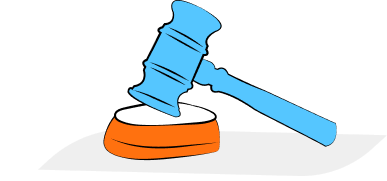How to create effective strategic and business goals for your organisation
Share this article
Learn how strategic and business goals can drive your organisation towards success. Discover effective methods and strategies to reach your long-term goals.
What is a strategic goal?
A strategic goal is a specific, long-term intention that an organization or individual sets up to direct its efforts and resources towards a specific direction. These goals are usually broad, overarching and focused on achieving the organization's overall vision and mission. They serve as guidelines for making decisions, prioritizing initiatives and measuring success over time. Strategic goals differ from day-to-day or short-term goals by their focus on long-term results and their impact on the organization's future.
Dear child has many names - business goals, strategic goals, growth goals
The concept of strategic goals can bear many names depending on the context and specific focus. Business objectives tend to be more focused on commercial aspects such as market share, profitability or customer satisfaction. Growth targets, on the other hand, concentrate on expansion, such as increasing sales, headcount, or market presence.
The components of the goal
When it comes to setting strategic goals, it is important not only to define what the goals are, but also to clarify the various elements that ensure the goals are feasible and effective.
-
Responsible: For each goal, a specific person or department should be designated as responsible. This means that they have the main responsibility for ensuring that the goal is achieved. Having a clear division of responsibilities is essential to ensure that there is someone directly responsible who can drive and monitor progress.
-
The rapporteur: In addition to the person in charge, a reporter is often needed. The reporter's task is to continuously collect data and report progress towards the goal. This role is essential to keep all stakeholders updated and to ensure that there is ongoing assessment of how well the goal is being achieved.
-
Measurability: For a goal to be effective, it must be measurable. This means that there must be concrete, quantifiable indicators that clearly show progress or lack of progress. The measurability makes it possible to objectively evaluate how close you are to achieving the goal and if adjustments are needed in the strategy.
-
The conditions: Each strategic goal has a set of conditions that must be met in order for it to be achieved. These can be resources, specific skills, technologies or processes that are needed. Identifying and ensuring these conditions is crucial to give the goal a realistic chance of becoming a reality.
-
The level of ambition: Finally, a clear level of ambition is required for each goal. This means setting a standard for what is considered a successful achievement of the goal. The level of ambition should be challenging but realistic, and it helps to motivate and guide the efforts made to achieve the goal.
By carefully defining these components of a strategic goal, organizations can create a clear and actionable path to success.
SMARTER acronyms
A popular framework for defining effective goals is the SMARTER acronym. It stands for:
-
Specific: The goal must be clear and concrete.
-
Measurable: There should be quantifiable indicators of progress.
-
Accepted: The goal should be accepted by the person in charge.
-
Relevant: It must be significant and important for the organization.
-
Timebound: A clear time frame must be established.
-
Engaging: Engaging and motivating for the team.
-
Realistic: The team must feel that the goal is attainable.
GoalEnvision as a goal tool
GoalEnvision is a digital tool designed to help organizations formulate, track and achieve their strategic goals. It makes it possible to break down big visions into manageable and measurable goals, and gives users the ability to track progress continuously.
Through GoalEnvision, users can create a structured and integrated plan that includes all levels of goals, from the overall strategic to the more specific and tactical. This helps ensure that all efforts are coordinated and directed toward the same end goal, increasing the chances of success and sustainable growth within the organization.
Share this article
Did you like this article? Here is more...
Latest




